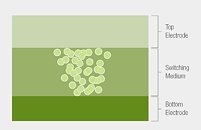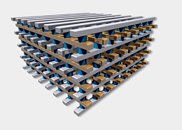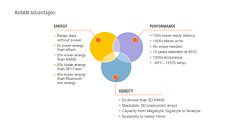Mobiveil, Crossbar Partnership Aims to Bring ReRAM to SSDs
Looking to bridge the gap between current SSDs and resistive memory technologies for the consumers that can actually afford it, Mobiveil and Crossbar have recently announced that they are working in conjunction to bring Crossbar's ReRAM technology to an SSD form-factor. ReRAM is a new type of non-volatile memory (meaning it stores data even when it's not being powered). It's based on a simple three-layer structure of top electrode, switching medium and bottom electrode, where the resistance switching mechanism is based on the formation of a filament in the switching material when a voltage is applied between the two electrodes. Crossbar in particular (this type of resistive memory is also being pursued by other companies, such as HP) says their ReRAM cell is very stable, capable of withstanding temperature swings from -40°C to 125°C, 1M+ write cycles, and managing data retention of 10 years at 85°C. As an upside, it is 3D scalable, and its production can be achieved in standard CMOS manufacturing fabs.
This isn't the next evolution on SSD's - at least, not for the general consumer. ReRAM production and implementation costs will be leagues ahead of what current 3D NAND memory production entails, thus making this a niche product that is there for the customers that absolutely require the fastest throughput possible across a standard interface. In this case, NVMe is the choice - particularly, Mobiveil's NVMe, PCIe and DDR3/4 controllers can easily be adapted to accommodate the Crossbar ReRAM architecture, which is capable of six-million 512B IOPS below 10us latency.
This isn't the next evolution on SSD's - at least, not for the general consumer. ReRAM production and implementation costs will be leagues ahead of what current 3D NAND memory production entails, thus making this a niche product that is there for the customers that absolutely require the fastest throughput possible across a standard interface. In this case, NVMe is the choice - particularly, Mobiveil's NVMe, PCIe and DDR3/4 controllers can easily be adapted to accommodate the Crossbar ReRAM architecture, which is capable of six-million 512B IOPS below 10us latency.




